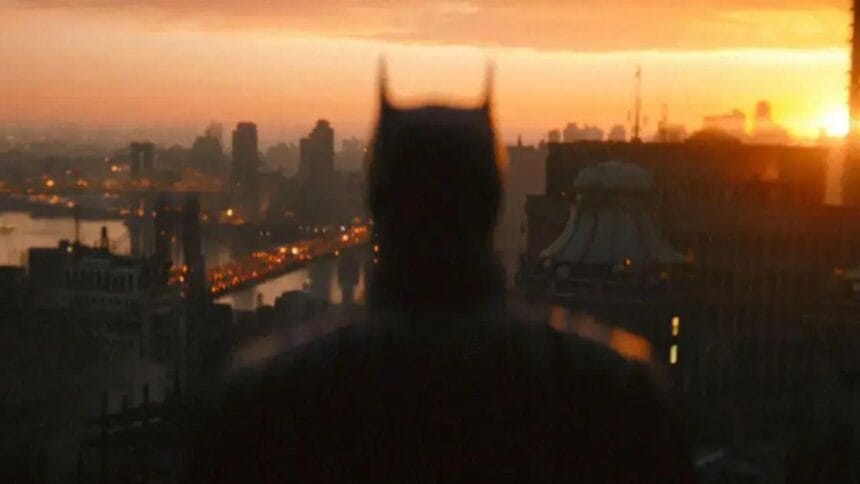In the dark underbelly of Gotham City, crime seems to thrive relentlessly. This isn’t just a side effect of villainy or the Joker’s antics; it’s ingrained in the very fabric of the city’s culture. A recent comic sheds light on why even Batman, the Dark Knight sworn to protect Gotham, can’t hope to eradicate crime completely. In the new edition of *Harleen*, the origin of Harley Quinn, we dive deep into the psyche of Gotham’s residents and the chilling revelations that explode preconceived notions about empathy and morality in a city consumed by chaos. You’re not just in for a thrilling read, but perhaps an unsettling exploration of what keeps Gotham spinning in circles of crime and violence.
Understanding Gotham’s Violent Nature
Gotham isn’t just a city plagued by crime—it’s a city that seems to *breed* it. You’ve probably wondered, ‘Why can’t Batman just clean up Gotham for good?’ The truth is, Gotham’s violent nature isn’t just about gangs or supervillains. It’s built into the city’s very foundation.
Think about it: Gotham’s architecture is dark and imposing, its streets are narrow and shadowy, and its people live in a constant state of fear. This isn’t just a setting—it’s a reflection of the city’s soul. Crime here isn’t an anomaly; it’s almost expected. The system is broken, corruption is rampant, and even the police are often powerless.
What sets Gotham apart is the way its violence is cyclical. It’s not just one villain causing chaos—it’s a never-ending cycle of crime, punishment, and relapse. Take Arkham Asylum, for example. It’s supposed to rehabilitate criminals, but it often becomes a revolving door for the city’s most dangerous minds. Batman may stop one threat, but another always rises to take its place.
So, what keeps Gotham trapped in this cycle? It’s a mix of societal breakdown, economic disparity, and a lack of hope. For many residents, crime isn’t a choice—it’s survival. And while Batman fights tirelessly
Harley Quinn’s Insights on Empathy
When you think of Harley Quinn, empathy might not be the first thing that comes to mind. But dig a little deeper, and you’ll find that her story is filled with surprising lessons about understanding others—even in the darkest of places.
Harley didn’t start as a criminal. She was Dr. Harleen Quinzel, a psychiatrist who wanted to help people. Her work at Arkham Asylum brought her face-to-face with the Joker, and her journey took a turn. But even as Harley embraced chaos, she never lost her ability to see the world through others’ eyes.
What makes Harley’s perspective on empathy so unique? She’s lived on both sides—the healer and the rebel, the victim and the villain. This dual life gives her a rare understanding of pain and the ways people cope with it. In her own chaotic way, Harley reminds us that even those who seem ‘broken’ have stories worth hearing.
Her relationship with the Joker is often seen as toxic, but it also reveals how empathy can be twisted. Harley saw something in the Joker that others didn’t—and in trying to ‘fix’ him, she lost herself. It’s a cautionary tale about the dangers of empathy without boundaries.
Harley’s story also challenges us to look beyond labels. She’s more than just a ‘bad guy.’ She’s a survivor, a rebel, and someone who’s learned to find joy in the messiness of life. Through her eyes, we see that empathy isn’t about fixing people—it’s about understanding them, flaws and all.
The Cycle of Violence and Crime
Gotham’s crime isn’t just random—it’s a cycle that keeps repeating itself. You might think Batman could stop it, but the truth is, crime here is like a broken record. It keeps playing over and over, and it’s hard to know where it even started.
Let’s break it down. Imagine a city where crime isn’t just about bad people doing bad things. It’s about a system that’s broken. Police are overwhelmed, corruption is everywhere, and for many people, crime feels like the only way to survive. It’s not an excuse—it’s just the reality of life in Gotham.
Then there’s the role of fear. When people are scared, they make desperate choices. And in Gotham, fear is everywhere. The city’s dark streets and shadowy corners make it easy for crime to thrive. Even when Batman stops one criminal, another takes their place. It’s like trying to plug a leak with your hand—there’s always another hole.
And let’s not forget the villains. They’re not just one-time threats. The Joker, Two-Face, and others keep coming back, pulling Gotham deeper into chaos. It’s not just about their crimes—it’s about the message they send. They make people believe that no matter what, crime will always win.
Breaking this cycle isn’t just about catching criminals—it’s about fixing the system. But in Gotham, that’s easier said than done. It’s a city that needs more than a hero—it needs a miracle.
The Role of Arkham Asylum
Arkham Asylum is supposed to be the solution—a place where Gotham’s most dangerous criminals can get help and rehabilitation. But if you look closer, it’s clear that Arkham might be part of the problem.
Think about it. Arkham is filled with some of the city’s worst villains—people like the Joker, Two-Face, and the Riddler. These aren’t just criminals; they’re masterminds of chaos. And yet, they keep escaping. It’s like Arkham has a revolving door, with inmates breaking out as fast as Batman can put them in.
The big question is: why? Part of it is the asylum’s outdated methods. Arkham’s treatments are often more about containment than real healing. Instead of addressing the root causes of these villains’ actions, the focus is on locking them up. And when they do escape, they come back more dangerous than ever.
There’s also the issue of corruption. Some staff members are bribed or threatened, making it easier for inmates to exploit weaknesses. Even the building itself is a maze of dark corridors and hidden passages, perfect for planning an escape.
But maybe the biggest problem is the idea of Arkham itself. It’s a symbol of Gotham’s inability to truly fix what’s broken. Instead of solving the cycle of crime, it perpetuates it. And as long as Arkham exists in its current form, Gotham will keep facing the same threats—over and over again.
Can Batman Break the Cycle?
Batman is Gotham’s Dark Knight, the hero who fights tirelessly to protect the city. But can he really break the cycle of crime that’s plagued Gotham for decades? It’s a question that’s haunted fans for years, and the answer isn’t simple.
First, let’s talk about what Batman is up against. Gotham isn’t just a city with a few bad apples—it’s a place where crime is woven into the very fabric of society. Corruption runs deep, the system is broken, and even the police can’t always be trusted. Batman may stop one villain, but another always rises to take their place. It’s like trying to hold back the tide with your bare hands.
Then there’s the psychological battle. Batman’s war on crime is endless. He’s not just fighting criminals; he’s fighting fear, hopelessness, and a city that seems destined to stay in the shadows. Every victory is temporary, and every defeat feels like the system is winning. It’s enough to make anyone wonder if it’s all worth it.
But here’s the thing: Batman isn’t just about brute force. He’s a symbol of hope—a reminder that even in the darkest times, someone is fighting for what’s right. His presence alone inspires people to believe that change is possible. And while he may not be able to fix everything, he’s showing Gotham that it’s worth trying.
So, can Batman break the cycle? Maybe not entirely, but he’s proving that even small victories matter. And in a city like Gotham, that’s a start.







